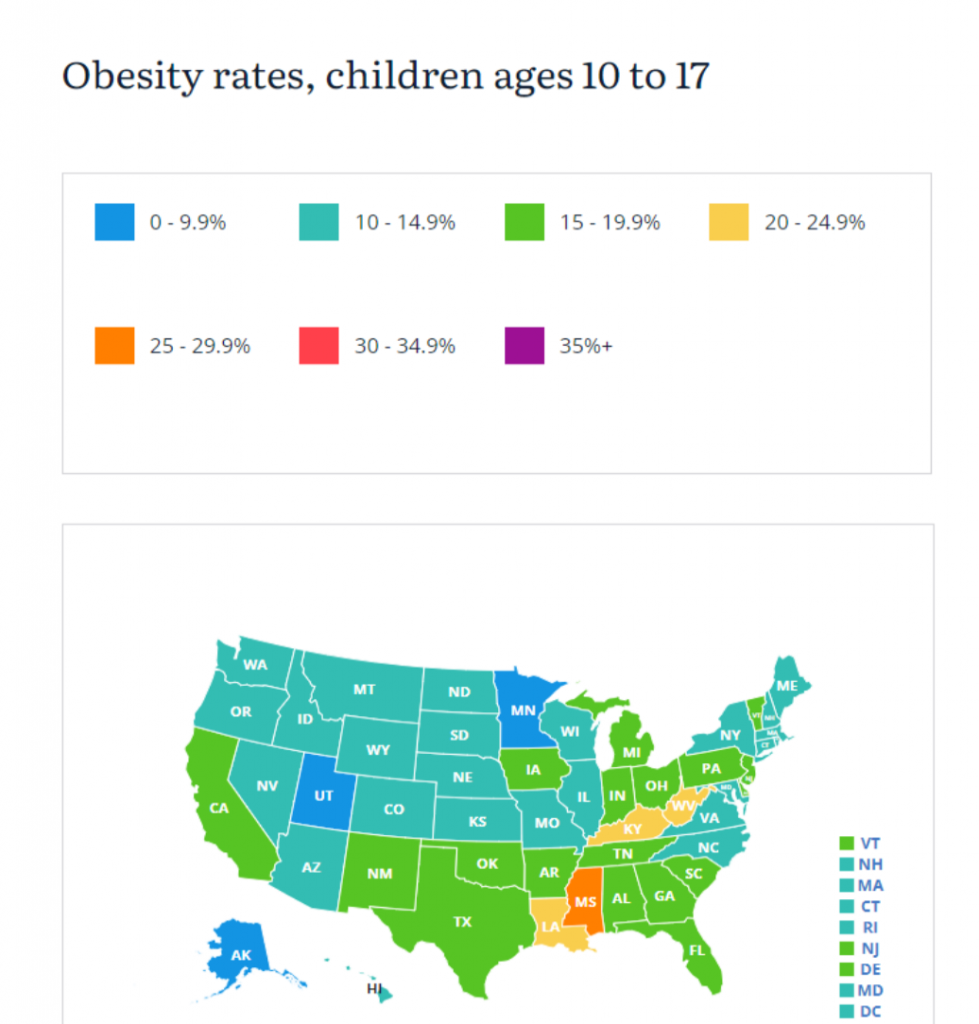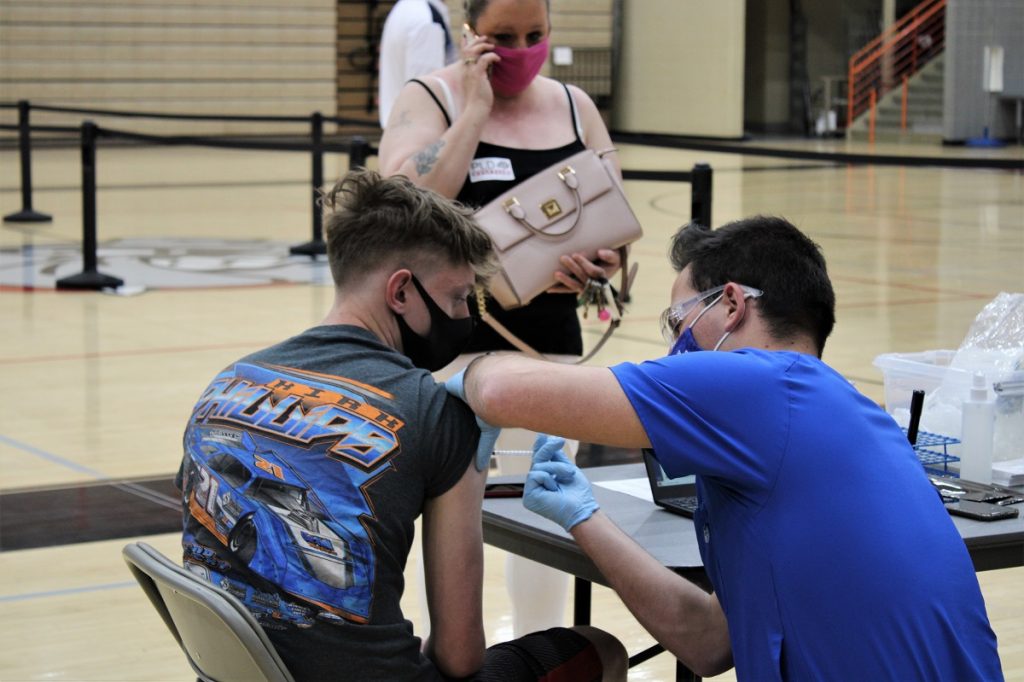News

Ohio Valley childhood obesity rates have increased, putting kids at greater risk of severe COVID-19 illness
By: Corinne Boyer | Ohio Valley ReSource
Posted on:
FRANKFORT, Ky. (OVR) — In October, University of Kentucky Children’s hospital reported a substantial rise in children hospitalized for COVID-19. The escalation began in July.
Dr. Sean McTigue, medical director for pediatric infection prevention and control said all hospitalized children had one thing in common.
“So our number one driver of risk for admission to the Children’s Hospital has been obesity,” McTigue said. “So the majority of our children with severe critical COVID have been obese, and in particular, the ones who’ve gotten more critically ill have been obese.”
All of the children hospitalized with COVID-19 who were eligible for the vaccine were unvaccinated.
Obesity has been a long-standing health issue in the Ohio Valley and the pandemic has made it worse. The most recent childhood obesity report by the Robert Wood Johnson Foundation shows Kentucky has the highest rate of childhood obesity in the U.S., among children ages 10 to 17. West Virginia has the fourth highest rate and Ohio is in the 17th spot.

‘A multifactorial disease’
Dr. Aurelia Radulescu is a pediatrician certified in obesity medicine and medical director of the BMI clinic at Kentucky Children’s hospital.
“In general obesity, it’s a multifactorial disease, there is not just one single factor leading to obesity,” she said. “There is a genetic predisposition, there are environmental factors contributing to that and definitely the lifestyle plays a very important role — dietary habits, physical activity level, sleep hygiene, sedentary levels — so all these are contributing to excessive weight gain and obesity.”
Geography in Kentucky can make a difference too. If there are no sidewalks or places for children to safely play, that limits the ability to be active. Playing sports may not be an option either.
“Some of the children will not have those opportunities to play sports, and many of our patients are suffering from severe obesity, which does limit their mobilities,” Radulescu said. “So pushing them into a very high intense physical activity level of exercise may not be realistic from the beginning.”
Poverty also limits quantity, quality and access to foods. Radulescu said obese children oftentimes come from obese families.
“Most parents and other siblings may have obesity and can be the genetic predisposition, but the environment definitely plays a very important role,” she said.
With few Intervention and treatment programs, educating kids about nutrition and physical activity is also a challenge. The West Virginia Coronary Artery Risk Detection in Appalachian Communities Project or CARDIAC Project, accesses risks for cardiovascular disease.
Eloise Elliott is a professor at the college of Physical Activity and Sports Sciences at West Virginia University and co-directs the CARDIAC project. At one time, the program operated in all 55 counties and allowed for lipid tests of 5th graders. But a few years ago, the program lost funding through the West Virginia legislature.
It now operates in 20 counties with funding from Supplemental Nutrition Assistance Program Education dollars, but there’s no money for cholesterol checks. Elliott said kids now self-report their weight and height.
“So we didn’t expect it to be real accurate, because they are fifth graders. But we were very surprised that 42% … reported their height and weight that was above the 85th percentile of BMI,” she said.
Kids above the 85th percentile of BMI, or body mass index, are considered overweight and should be seen by a doctor, according to healthychildren.org. West Virginia also has a high rate of adult obesity like Kentucky, meaning kids are also likely to be obese.
“Some of it is not having the knowledge on why it’s important or how to eat healthy or how to find new ways to be active, but some of it’s just because that’s not the way they were raised and so they don’t do it,” Elliott said. “So it’s really an uphill battle.”
Know if your child is obsese
Parents may not know their children are obese — which is the 95% percentile of BMI.
“One good rule of thumb I can say though, is if you have to ask the question, there’s a good chance that your child may actually meet the definition for obesity,” McTigue said. It’s much easier to meet than most people and then most people think.”
Obesity can put children at a much greater risk of having more severe disease with COVID.
Daniel Blatt, a pediatric infectious disease doctor at the University of Louisville Norton Children’s Hospital, said obese children can be one and a half to two times more likely to be hospitalized with COVID.
“Some reports are even saying three times higher than people who are not obese and children. It’s hard to say exactly how many patients we’re seeing that are obese and hospitalized with COVID-19 but it does seem to make disease outcome worse,” Blatt said.
Isolation and the switch to online school has things like access to healthy foods, regular meals and exercise.
One study showed how lockdowns changed eating and food buying habits because parents feared the pandemic would lead to food shortages.
“The newly developed term “covibesity” has been introduced to portray the aggravation in obesity rates due to the lockdown imposed during the pandemic,” according to the study.
Permanent solutions
Jamie Bussel is senior program officer with the Robert Wood Johnson Foundation. Bussel said the foundation recommends making temporary policy measures implemented during COVID-19 permanent to reduce some of the causes of obesity.
“Making universal school meals permanent and providing resources to schools to ensure that every kid has access to a consistent source of healthy meals would go a really long way,” Bussel said.
In addition, closing the Medicaid coverage gaps and extending WIC benefits and the child tax credit would go a long way, Bussel said.
“We know that in just the first month of that extended payment, the percent of families with children reporting food insecurities declined significantly.”

“Norton Children’s Hospital is very equipped to hand[le] a large amount of sick patients,” Blatt said. “But anytime that there is an abnormal amount of people getting sick, you’re going to be worried that you’re going to run out of resources. And that’s why it’s important that everyone get vaccinated and stay out of the hospitals if possible.”

